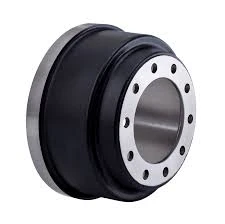
-
 Afrikaans
Afrikaans -
 Albanian
Albanian -
 Amharic
Amharic -
 Arabic
Arabic -
 Armenian
Armenian -
 Azerbaijani
Azerbaijani -
 Basque
Basque -
 Belarusian
Belarusian -
 Bengali
Bengali -
 Bosnian
Bosnian -
 Bulgarian
Bulgarian -
 Catalan
Catalan -
 Cebuano
Cebuano -
 Corsican
Corsican -
 Croatian
Croatian -
 Czech
Czech -
 Danish
Danish -
 Dutch
Dutch -
 Turanci
Turanci -
 Esperanto
Esperanto -
 Estonian
Estonian -
 Finnish
Finnish -
 French
French -
 Frisian
Frisian -
 Galician
Galician -
 Georgian
Georgian -
 German
German -
 Greek
Greek -
 Gujarati
Gujarati -
 Haitian Creole
Haitian Creole -
 hausa
hausa -
 hawaiian
hawaiian -
 Hebrew
Hebrew -
 Hindi
Hindi -
 Miao
Miao -
 Hungarian
Hungarian -
 Icelandic
Icelandic -
 igbo
igbo -
 Indonesian
Indonesian -
 irish
irish -
 Italian
Italian -
 Japanese
Japanese -
 Javanese
Javanese -
 Kannada
Kannada -
 kazakh
kazakh -
 Khmer
Khmer -
 Rwandese
Rwandese -
 Korean
Korean -
 Kurdish
Kurdish -
 Kyrgyz
Kyrgyz -
 Lao
Lao -
 Latin
Latin -
 Latvian
Latvian -
 Lithuanian
Lithuanian -
 Luxembourgish
Luxembourgish -
 Macedonian
Macedonian -
 Malgashi
Malgashi -
 Malay
Malay -
 Malayalam
Malayalam -
 Maltese
Maltese -
 Maori
Maori -
 Marathi
Marathi -
 Mongolian
Mongolian -
 Myanmar
Myanmar -
 Nepali
Nepali -
 Norwegian
Norwegian -
 Norwegian
Norwegian -
 Occitan
Occitan -
 Pashto
Pashto -
 Persian
Persian -
 Polish
Polish -
 Portuguese
Portuguese -
 Punjabi
Punjabi -
 Romanian
Romanian -
 Russian
Russian -
 Samoan
Samoan -
 Scottish Gaelic
Scottish Gaelic -
 Serbian
Serbian -
 Sesotho
Sesotho -
 Shona
Shona -
 Sindhi
Sindhi -
 Sinhala
Sinhala -
 Slovak
Slovak -
 Slovenian
Slovenian -
 Somali
Somali -
 Spanish
Spanish -
 Sundanese
Sundanese -
 Swahili
Swahili -
 Swedish
Swedish -
 Tagalog
Tagalog -
 Tajik
Tajik -
 Tamil
Tamil -
 Tatar
Tatar -
 Telugu
Telugu -
 Thai
Thai -
 Turkish
Turkish -
 Turkmen
Turkmen -
 Ukrainian
Ukrainian -
 Urdu
Urdu -
 Uighur
Uighur -
 Uzbek
Uzbek -
 Vietnamese
Vietnamese -
 Welsh
Welsh -
 Bantu
Bantu -
 Yiddish
Yiddish -
 Yoruba
Yoruba -
 Zulu
Zulu
Feb . 07, 2025 04:41
Komawa zuwa lissafi
drum brake disc brake comparison
Drum brakes and disc brakes are two fundamental components that perform the crucial task of vehicle stopping, each offering distinct advantages and presenting unique considerations. Understanding the differences is essential for making an informed choice for your vehicle, especially when it pertains to performance and safety.
Disc brakes offer an additional advantage in terms of maintenance and reliability. Their exposed design makes it easier to inspect for wear and tear, and replacing the brake pads is generally a straightforward process. They are less susceptible to water interference, which enhances their performance in wet conditions. These attributes make disc brakes preferable for drivers who prioritize safety and consistent brake performance, especially in modern, high-speed driving scenarios. While the advantages of disc brakes are compelling, they are usually more expensive than drum brakes. Vehicles with rear drum brakes, especially in economy models, capitalize on cost reduction, as rear brakes typically experience less stress. This balance allows manufacturers to keep the vehicle affordable while maintaining adequate braking performance. When considering drum versus disc brakes, the choice might come down to the specific needs and priorities of the vehicle and driver. For those who seek an economical solution with acceptable performance for daily commuting, vehicles with drum brakes might suffice. On the other hand, for those who engage in high-speed driving or prioritize enhanced safety, especially in variable weather conditions, disc brakes offer peace of mind with their robustness and reliability. Ultimately, whether opting for drum or disc brakes, regular maintenance and timely inspections are vital to ensure the braking system remains in optimal condition. The evolution of braking technology continues to influence vehicle design, providing consumers the opportunity to choose the system that best aligns with their driving habits and safety requirements. Through considered selection and maintenance, drivers can achieve the right balance of performance, safety, and cost-efficiency in their vehicle's braking system.


Disc brakes offer an additional advantage in terms of maintenance and reliability. Their exposed design makes it easier to inspect for wear and tear, and replacing the brake pads is generally a straightforward process. They are less susceptible to water interference, which enhances their performance in wet conditions. These attributes make disc brakes preferable for drivers who prioritize safety and consistent brake performance, especially in modern, high-speed driving scenarios. While the advantages of disc brakes are compelling, they are usually more expensive than drum brakes. Vehicles with rear drum brakes, especially in economy models, capitalize on cost reduction, as rear brakes typically experience less stress. This balance allows manufacturers to keep the vehicle affordable while maintaining adequate braking performance. When considering drum versus disc brakes, the choice might come down to the specific needs and priorities of the vehicle and driver. For those who seek an economical solution with acceptable performance for daily commuting, vehicles with drum brakes might suffice. On the other hand, for those who engage in high-speed driving or prioritize enhanced safety, especially in variable weather conditions, disc brakes offer peace of mind with their robustness and reliability. Ultimately, whether opting for drum or disc brakes, regular maintenance and timely inspections are vital to ensure the braking system remains in optimal condition. The evolution of braking technology continues to influence vehicle design, providing consumers the opportunity to choose the system that best aligns with their driving habits and safety requirements. Through considered selection and maintenance, drivers can achieve the right balance of performance, safety, and cost-efficiency in their vehicle's braking system.
Na gaba:
Sabbin labarai
-
What Are Drum BrakesLabaraiJul.07,2025
-
Understanding Brake Drum MaterialLabaraiJul.07,2025
-
Semi-Trailer Brake Drum: A Key Component for Extreme Loads and Long-Distance TransportLabaraiJul.07,2025
-
Drum Brake Pads for SaleLabaraiJul.07,2025
-
Brake Drums for SaleLabaraiJul.07,2025
-
Brake Drum ManufacturerLabaraiJul.07,2025
-
Aluminum Brake Drums: The Future of High-Performance CarsLabaraiJul.07,2025
